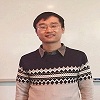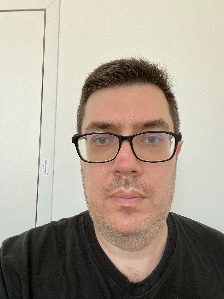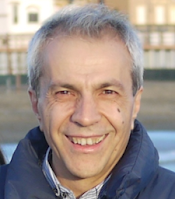Scientific Program
Keynote Session:
Title: Inkjet microfluidic technology for printing and life science applications
Biography:
Alexander Govyadinov has over 35 years of experience in various sensing platform development in academic and R&D industrial environments, and recent 18 years works for Hewlett-Packard printing, and after the Company split for HP Inc. In Advance Technology and Product Development Organization developing novel sensing and microfluidic solutions for inkjet and other applications. He developed Light Scattering Drop Detection concept implemented in HP first page wide array printers Office jet prox series. Last decade he led development of novel concepts of microfluidic architectures enabling HP advanced inks and microfluidic components and systems for life science applications. He is co-author of multiple scientific publications and over 100 US Patents and patent applications.
Abstract:
Recently, there has been a lot of interest in microfluidic lab-on-a chip applications for life sciences, forensic, point-of-care, molecular-diagnostic, other in-vitro-diagnostic, organs- on-a-chip, environmental and other applications. Various scientific and commercial organizations explore different material sets and operational principles to forge microfluidic devices. Simultaneously, the inkjet industry is repurposing its well-developed material base and manufacturing processes for large scale fabrication of complex microfluidic systems for precision dispense, droplet manipulation and other applications. The presentation describes our recent progress in the development of a low-cost microfluidic platform utilizing the materials and processes of the commercial thermal inkjet business. The well-established microfluidic components and jetting elements are being repurposed for pumping, mixing, valving, fluid transport, sensing and other critical functions of complex integrated microfluidic systems. This presentation describes the operating principles of microfluidic elements, gives examples of their integration in functional devices and discusses the potential of the inkjet technology to deliver a broad range of microfluidic applications and lab-on-a-chip diagnostic devices.
Title: Microfluidic tools for fast exploration of liquid/liquid extraction thermodynamics
Biography:
NTU Vg. Prof. JC Gabriel is Research Director at the French Alternative Energies and Atomic Energy Commission (CEA) as well as co-director of the NTU Singapore CEA Alliance for Research in Circular Economy (SCARCE). He joined CEA in 2007 where he was CEA/LETI institute’s “Beyond CMOS” program manager. He then became deputy director of CEA’s Nanoscience program and co-principal investigator of the REE-CYCLE advanced ERC project (2013-2018), aiming to developing new rare earth extraction/recycling processes. Former student at the “École Normale Supérieure, Paris, France”, he received his Ph. D. from Orsay’s University, and his Habilitation from Joseph Fourier University in Grenoble, France. His career is a mixed academic – industrial one (CNRS/Nanomix Inc./CEA) in nanoscience. As such, he published 60+ papers in international peer reviewed journals and is co-inventor 50+ patents or patent applications (nanomaterials, carbon nanotubes, graphene and chemical sensors integration).
Abstract:
We will report on a newly developed liquid-liquid extraction microfluidic device integrated with Fourier Transform Infrared Spectroscopy (FTIR) and X-ray fluorescence (XRF)[1]. Our tools are aimed at studying liquid/liquid extraction processes. We will first present our studies of solvent chemical activities using FTIR spectroscopy . Using this system, we will also present unpublished results of extraction and back-extraction of rare-earth elements using synergic extractants. We perform, for the first time, on-line XRF quantification in microfluidics to monitor the extraction. This approach allowed us to quickly study the variation of free energies of transfer for the extraction and back extraction of three rare-earth elements at different temperatures. Overall, thanks to an automated approach, we show that thermodynamics and kinetics of extraction can be obtained in less than 12 hours with a resulting liquid waste of less than 20mL.
Title: Will update soon
Biography:
Abstract:
Will update soon
A PHP Error was encountered
Severity: 8192
Message: trim(): Passing null to parameter #1 ($string) of type string is deprecated
Filename: pastconference/past-program-schedule.php
Line Number: 239
Backtrace:
File: /efsdata/meetingsint-com/application/views/pastconference/past-program-schedule.php
Line: 239
Function: trim
File: /efsdata/meetingsint-com/application/controllers/Pastconference.php
Line: 128
Function: view
File: /efsdata/meetingsint-com/index.php
Line: 317
Function: require_once
Title: 3D microwave integrated absorption module for toxic gas detection
Biography:
Abstract:
Oral Session 1:
- Micro/Nanofluidics Research and Advances | Digital microfluidics
A PHP Error was encountered
Severity: 8192
Message: trim(): Passing null to parameter #1 ($string) of type string is deprecated
Filename: pastconference/past-program-schedule.php
Line Number: 354
Backtrace:
File: /efsdata/meetingsint-com/application/views/pastconference/past-program-schedule.php
Line: 354
Function: trim
File: /efsdata/meetingsint-com/application/controllers/Pastconference.php
Line: 128
Function: view
File: /efsdata/meetingsint-com/index.php
Line: 317
Function: require_once
Title: Digital microfluidics as a tool for drug delivery and formulation screening
Biography:
Romain Delamare has completed his PhD on nanostructured materials in 2003 from Orleans University and Postdoctoral Studies from Institute of nanosciences (IM2NP) , Marseille University, France. He was the Director of Winfab (Louvain-la-Neuve, Belgium) , a micro-nano fabrication platform for 8 years. He is now the head scientist of the research department of Medincell. He has published more than 30 papers in reputed journals and has been serving as an conference organiser of repute in the field of nanofabrication .
Abstract:
Microfluidic devices present many advantages for the development of efficient drugs as they offer rapid techniques for direct drug screening. They not only optimize resource management, but also enable massive parallelization for tests with significant economies of scale. The precise control of experimental conditions and the very low volumes involved in microfluidics solutions match the requirements of 2D and 3D cell cultures as well as organs on a chip, which is key to narrowing the bridge between in vitro and in vivo environments. Existing preclinical models are still inefficient for predicting clinical outcomes and microfluidic devices offer a more rapid and cost-effective alternative. In this review, we will highlight microfluidics microfabrication methods and knowhow exploited in the field of drug delivery. And then, we will discuss the interest of microfluidic devices for use at point of care as well as organ on a chip models as smart, sensitive, and reproducible platforms for the drug testing under bio like conditions.
A PHP Error was encountered
Severity: 8192
Message: trim(): Passing null to parameter #1 ($string) of type string is deprecated
Filename: pastconference/past-program-schedule.php
Line Number: 354
Backtrace:
File: /efsdata/meetingsint-com/application/views/pastconference/past-program-schedule.php
Line: 354
Function: trim
File: /efsdata/meetingsint-com/application/controllers/Pastconference.php
Line: 128
Function: view
File: /efsdata/meetingsint-com/index.php
Line: 317
Function: require_once
Title: Micro-flow analysis with monolithic columns
Biography:
Petr Solich has completed his PhD. from Charles University, Faculty of Pharmacy, Hradec Kralove, Czech Republic. He is the head of Department of Analytical Chemistry as well as head of University Research Centre UNCE at Faculty of Pharmacy, Charles University. He has published more than 180 papers in impacted analytically oriented journals, with h-index 28 and has been also serving as an editorial board member of journal Talanta.
Abstract:
Miniaturization in flow analysis can be done by several ways, one of them is Sequential Injection Chromatography (SIC), which use monolithic columns for separation processes and presently is already becoming well-established analytical technique.
Monolithic materials proved their role both as sorbents for solid phase extraction and chromatographic separation. These methods profit from large active surface (mesopores) and highly porous structure (macropores) of the monoliths. Although available commercially, significant benefit arises from ease of their preparation in laboratory. Numerous approaches can be used for preparation of monoliths leading to materials varying in active surface, porosity, chemistries, polymer properties, and size. This flexibility results in extraction and separation sorbents including formats such as pipette tip for solid phase extraction (SPE), micro-column SPE, well-plate SPE, and HPLC analytical and capillary columns that are finding applications in manual, semi-automated, and on-line methods. Typical target samples include complex environmental and biological matrixes, as well as all kinds of inorganic and organic analytes including biomolecules. A broad range of micro-flow analysis methods have already been developed using monoliths.
Fundaments, overview, trends, and perspectives of monoliths in micro-flow analysis will be discussed. An overview of several recent applications of the use of monolithic columns in micro-flow techniques will also be pointed out.
A PHP Error was encountered
Severity: 8192
Message: trim(): Passing null to parameter #1 ($string) of type string is deprecated
Filename: pastconference/past-program-schedule.php
Line Number: 354
Backtrace:
File: /efsdata/meetingsint-com/application/views/pastconference/past-program-schedule.php
Line: 354
Function: trim
File: /efsdata/meetingsint-com/application/controllers/Pastconference.php
Line: 128
Function: view
File: /efsdata/meetingsint-com/index.php
Line: 317
Function: require_once
Title: Diffusion-dominated pinch-off of ultralow surface tension fluids
Biography:
Lei Xu obtained his PhD in Physics Department of the University of Chicago in 2006, and did his postdoc in School of Engineering and Applied Sciences in Harvard University from 2006 to 2009. He then joined the Physics Department of The Chinese University of Hong Kong in 2009 and he is currently a Professor working in the field of soft condensed matter experiment.
Abstract:
We study the breakup of a liquid thread inside another liquid at different surface tensions. In general, the pinch-off of a liquid thread is governed by the dynamics of fluid flow. However, when the interfacial tension is ultralow (2–3 orders lower than normal liquids), we find that the pinch-off dynamics can be governed by bulk diffusion. By studying the velocity and the profile of the pinch-off, we explain why the diffusion-dominated pinch-off takes over the conventional breakup at ultralow surface tensions.
A PHP Error was encountered
Severity: 8192
Message: trim(): Passing null to parameter #1 ($string) of type string is deprecated
Filename: pastconference/past-program-schedule.php
Line Number: 354
Backtrace:
File: /efsdata/meetingsint-com/application/views/pastconference/past-program-schedule.php
Line: 354
Function: trim
File: /efsdata/meetingsint-com/application/controllers/Pastconference.php
Line: 128
Function: view
File: /efsdata/meetingsint-com/index.php
Line: 317
Function: require_once
Title: Thermofluidic heat exchangers for actuation of transcription in artificial tissues
Biography:
Abstract:
A PHP Error was encountered
Severity: 8192
Message: trim(): Passing null to parameter #1 ($string) of type string is deprecated
Filename: pastconference/past-program-schedule.php
Line Number: 354
Backtrace:
File: /efsdata/meetingsint-com/application/views/pastconference/past-program-schedule.php
Line: 354
Function: trim
File: /efsdata/meetingsint-com/application/controllers/Pastconference.php
Line: 128
Function: view
File: /efsdata/meetingsint-com/index.php
Line: 317
Function: require_once
Title: Design and characterization of an on-chip continuous microdistillation tool.
Biography:
Abstract:
A PHP Error was encountered
Severity: 8192
Message: trim(): Passing null to parameter #1 ($string) of type string is deprecated
Filename: pastconference/past-program-schedule.php
Line Number: 354
Backtrace:
File: /efsdata/meetingsint-com/application/views/pastconference/past-program-schedule.php
Line: 354
Function: trim
File: /efsdata/meetingsint-com/application/controllers/Pastconference.php
Line: 128
Function: view
File: /efsdata/meetingsint-com/index.php
Line: 317
Function: require_once
Title: Microfluidic Devices for LOC and Diagnostic Applications
Biography:
Abstract:
A PHP Error was encountered
Severity: 8192
Message: trim(): Passing null to parameter #1 ($string) of type string is deprecated
Filename: pastconference/past-program-schedule.php
Line Number: 354
Backtrace:
File: /efsdata/meetingsint-com/application/views/pastconference/past-program-schedule.php
Line: 354
Function: trim
File: /efsdata/meetingsint-com/application/controllers/Pastconference.php
Line: 128
Function: view
File: /efsdata/meetingsint-com/index.php
Line: 317
Function: require_once
Title: Biological applications of microfluidics in cell motility and plant root growth dynamics
Biography:
Abstract:
A PHP Error was encountered
Severity: 8192
Message: trim(): Passing null to parameter #1 ($string) of type string is deprecated
Filename: pastconference/past-program-schedule.php
Line Number: 354
Backtrace:
File: /efsdata/meetingsint-com/application/views/pastconference/past-program-schedule.php
Line: 354
Function: trim
File: /efsdata/meetingsint-com/application/controllers/Pastconference.php
Line: 128
Function: view
File: /efsdata/meetingsint-com/index.php
Line: 317
Function: require_once
Title: Lab-on-glass system based on thin film optoelectronic devices and thick film microfluidics
Biography:
Domenico Caputo is Associate Professor with tenure at DIET at the University of Rome “La Sapienza”. His main research fields concerned the development of amorphous silicon photodetectors for detection of radiation from the UV to the near infrared range and of innovative electronic devices based on amorphous silicon. The present research interest is focused on the development of thin film photodetector and Lab-on-Chip system for DNA amplification and mycotoxin detection. He is referee of several scientific journals, author of more than 100 papers on international journals and principal investigator of national and international projects.
Abstract:
Lab-on-Chip technology is gaining great interest due to the many possibilities that it offers in the fields of life sciences, from parallel analysis in genomics to point-of-care devices in medical diagnostics. At the beginning, Lab-on-Chip devices essentially consisted of a microfluidic network that miniaturized the analytical procedures leading to faster reaction kinetics and lower sample and reagents consumption. Recent devices integrate on a single substrate several functional modules, that allow all the functions of a human-scale test laboratory including transferring samples, drawing off a precise volume of a chemical product, reagent mixing, detection and quantification of biomolecules.













